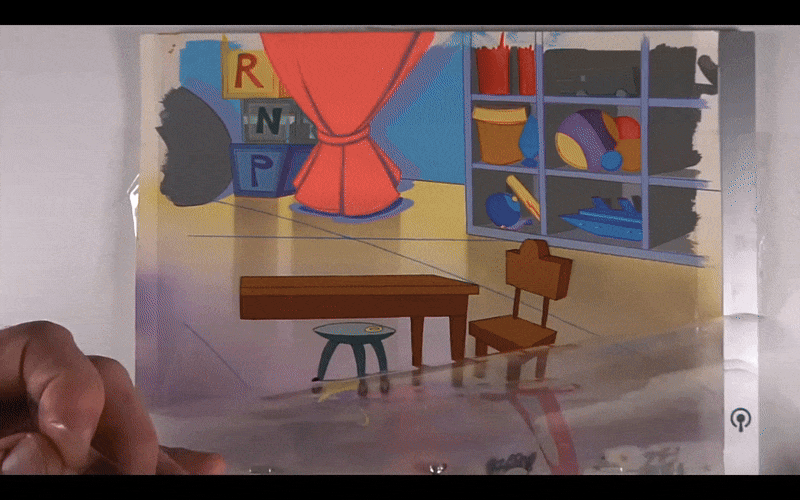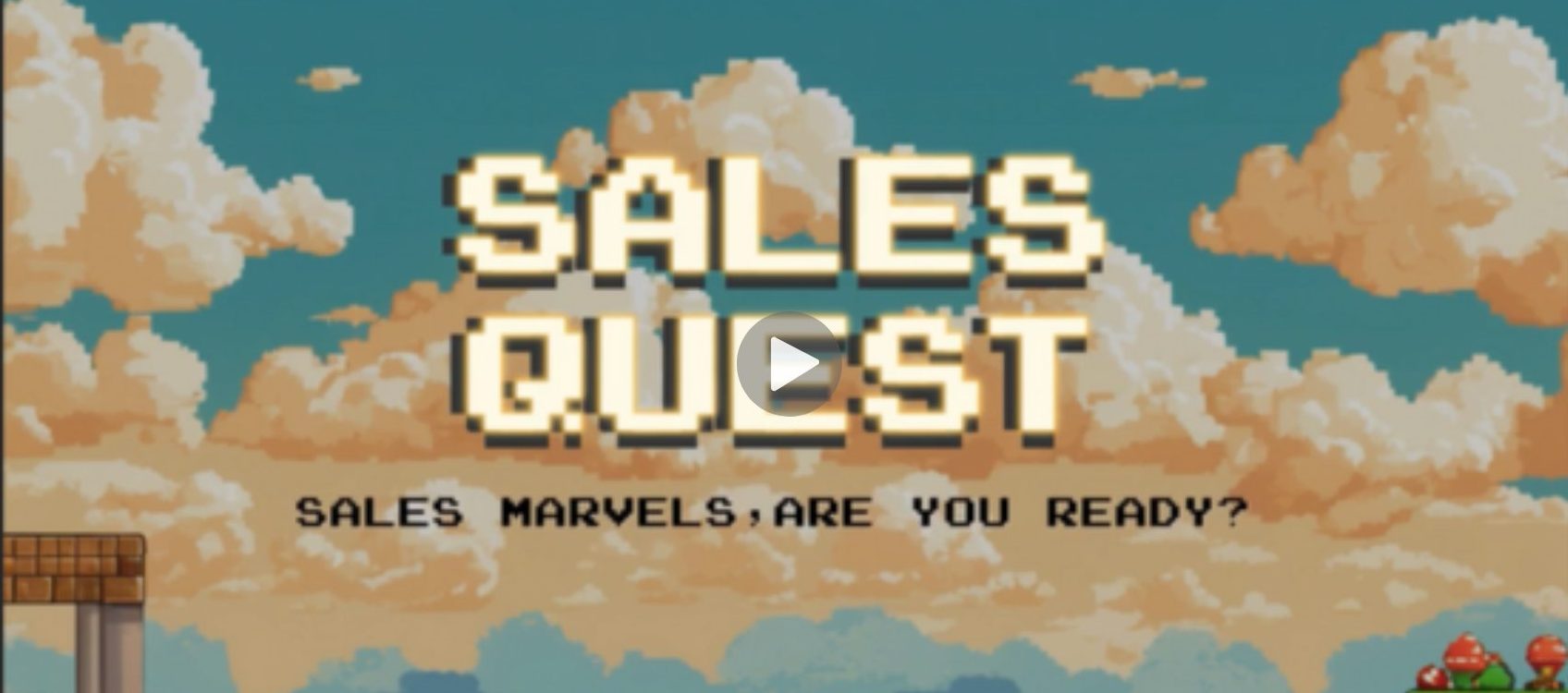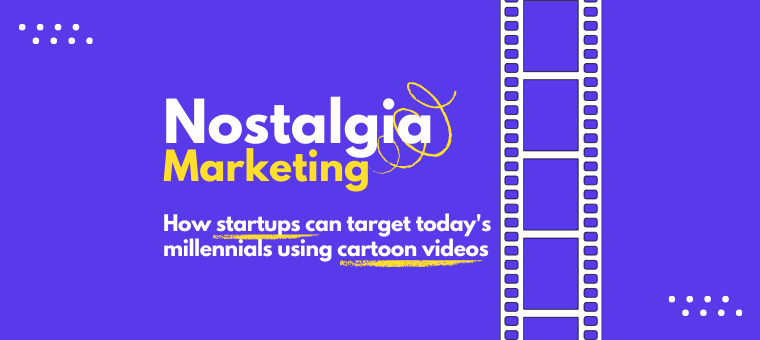What is 2D Animation? The Art That Continues to Evolve!
Think back to your childhood - curled up on the couch, eyes glued to the TV, completely lost in the magic of Saturday morning cartoons.

The quiet hum of the TV, the first few notes of a theme song you still recognize, and the animated world that felt like home.
That magic? That’s 2D animation in action. It’s what brought your favorite characters to life, frame by frame, making them jump, dance, and tell unforgettable stories.
And the best part? That charm is still alive today.
In this article, we’ll dive into -
- Definition of 2D Animation
- History of 2D Animation
- Best 2D Animation Softwares (with G2 ratings)
- Applications
- Advantages
- Challenges
- Future of 2D Animation
So, let’s dive in and explore the fascinating world of 2D animation!
What is 2D Animation?
2D animation is a type of animation where movement is created in a two-dimensional space (height and width).
It can be done frame by frame, where each drawing is created individually to show motion, or through digital techniques that move characters and objects smoothly using software.
In general, 2D animation involves designing and animating characters, objects, and backgrounds on a flat plane - unlike 3D animation, which adds depth.
It’s widely used in cartoons, explainer videos, advertisements, and games to bring stories and visuals to life through expressive, hand-drawn or computer-generated motion.
History of 2D Animation
Now that we know what it is, let’s see how it has evolved over the years!
1900s - The Beginnings: Hand-Drawn Animation
- Early animators began experimenting with sequential drawings to create the illusion of motion.
- Émile Cohl’s Fantasmagorie (1908) became the first fully animated film.
- Cohl drew 700 individual frames on glass plates, tracing each with small changes.
- The film’s chalkboard look came from inverting black ink on white paper in post-production.
1920s - The Rise of Studios
- Animation gained popularity as Disney and Fleischer Studios pushed creative limits.
- Disney’s Steamboat Willie (1928) introduced sound-synchronized animation, revolutionizing the industry.
- Fleischer Studios brought beloved iconic cartoon characters like Betty Boop, Popeye, and Superman to life.
1930s to 1950s - The Cel Animation Era

- Cel Animation became the standard: characters were painted on transparent sheets (cels) over static backgrounds.
- This saved time and added depth to animated scenes.
- Disney’s Snow White and the Seven Dwarfs (1937) became the first full-color, cel-animated feature film.
1950s to 1960s - The Television Boom & Limited Animation
- The rise of TV created a massive demand for animated shows.
- Studios adopted limited animation, reusing frames and backgrounds to speed up production.
- Hanna-Barbera studio led the charge with classics like Yogi Bear and The Jetsons.
1990s to 2000s - The Digital Revolution
- Computers transformed the process, and Adobe Flash replaced traditional cel work.
- Animation became faster, cheaper, and more accessible.
- Web cartoons like Happy Tree Friends became viral hits, proving that independent creators could now animate.

2010s to Present - The AI & Software Era
- Advanced softwares and AI animation tools now automate tasks like lip-syncing, motion, and background creation.
- What once took studios can now be done by anyone with computer software and an idea.
- Platforms like Animaker, Toon Boom, and Adobe Animate make 2D animation faster, smarter, and more accessible than ever.
Best 2D Animation Softwares (with G2 Ratings)
Choosing the right 2D animation software can completely transform your creative process.
All the tools listed below are backed by verified G2 ratings - one of the world’s most trusted platforms for authentic software reviews and comparisons.
1. Animaker
A web-based platform with 30M+ users, loved for its character builder, vast asset library, and effortless workflow.
⭐ G2 Rating (Sep 2025): 4.7/5 (based on 931 reviews)

2. Vyond
Vyond is a cloud-based tool known for creating simple animations through a drag-and-drop interface.
⭐ G2 Rating (Sep 2025): 4.8/5 (based on 437 reviews)

3. Powtoon
A go-to online tool for creating animated presentations and explainer videos, blending simplicity with creative flexibility.
⭐ G2 Rating (Sep 2025): 4.4/5 (based on 233 reviews)

4. Toon Boom Harmony
An industry-standard used by top studios for TV shows, films, and games, offering powerful rigging, compositing, and drawing tools
⭐ G2 Rating (Sep 2025): 4.7/5

5.Blender (Grease Pencil)
While known for 3D animation, Blender’s Grease Pencil feature allows seamless 2D drawing and animation inside a 3D environment.
⭐ G2 Rating (Sep 2025): 4.6/5 (based on 303 reviews)

6. OpenToonz
A free, open-source animation tool used by studios like Studio Ghibli. Offers a mix of professional-level features and creative freedom.
⭐ G2 Rating (Sep 2025): 4.4/5

7. Adobe Animate
Part of the Adobe Creative Suite, this tool is ideal for interactive web animations and multimedia projects with strong ecosystem integration.
⭐ G2 Rating (Sep 2025): 4.1/5 (based on 162 reviews)

Applications of 2D Animation
2d animation is everywhere, from the shows we watch to the games we play! Here are some of its most popular applications.
1. Films & TV shows
2D animation has long been a storytelling medium, from classics like Tom and Jerry to modern hits like Rick and Morty.
Beyond television, masterpieces like Spirited Away, by Studio Ghibli, showcase how hand-drawn art can convey deep emotion and create unforgettable visuals.
2. Animated Explainers
2D animation is a powerful medium for explainer content, helping to simplify current events, scientific discoveries, and global trends in an engaging and accessible way.
Channels like Kurzgesagt make science, tech, and global issues engaging through colorful, well-paced motion graphics.
By combining stunning animation with insightful narration, 2D animation can turn even the most complicated ideas into digestible content.
3. Music Videos
Musicians and artists frequently use 2D animation to create visually stunning music videos and artistic projects.
For example, in Childish Gambino’s Feels Like Summer, the animation style is both calming and vivid, using saturated colours, everyday summer scenes, and symbolic visuals.
4. Training Video Courses
2D animation plays a big role in corporate training and e-learning. It helps simplify complex ideas, keep learners engaged, and boost retention.
Companies use animated training modules for everything from onboarding and compliance to product walkthroughs and skill-building courses.
Platforms like Animaker make it easy to create professional animated training videos with characters, scenes, and voiceovers.
5. Gaming Industry
Many indie and mobile games rely on 2D animation to craft distinctive art styles and immersive worlds.

A standout example is Stardew Valley - a cozy, pixel-animated farming sim that proves simple 2D graphics can deliver incredibly rich and emotional experiences.
Advantages of 2D Animation

1. Simplifies Complex Ideas
Animation has a unique ability to simplify complex concepts by turning abstract ideas into clear visual representations.
Whether it’s a scientific theory, a financial process, or a tutorial - animation, sound, and graphics make information easy to grasp and remember.
2. Increases Engagement
Animation’s lively visuals and fluid motion naturally draw the eye, making it hard to look away.
Unlike static images or plain text, animation keeps viewers engaged by blending creativity with storytelling.
3. Enhances Retention
People retain more information when it’s paired with visuals and stories. Animation helps audiences process, recall, and act on key messages long after viewing.
4. Engages Emotions
Through expressive characters, music, and color, animation can evoke emotion and build strong connections.
This makes messages more relatable and impactful.
5. Universal Communication
Animation transcends language and cultural barriers, making it a universal medium for communication.
With its visual storytelling, animation conveys messages in ways that words alone cannot, ensuring accessibility to a global audience.
6. Boosts Creativity
Animation gives creators the freedom to experiment with styles and narratives that live-action can’t achieve.
7. Cost-Effective
Animation is often a cost-effective solution compared to live-action productions.
It eliminates the need for expensive sets, on-location shoots, and large crews, offering a more budget-friendly alternative for creating high-quality content.
8. Increases Shareability
Animated content is inherently eye-catching and engaging, making it highly shareable across social media platforms.
Challenges of 2D Animation
While 2D animation is relatively easier compared to 3D animation, there are several challenges associated with creating 2D animation. They are -
1. Time-Consuming Production
Frame-by-frame animation needs individual drawings for every movement, making it slow and labor-intensive.
2. High Artistic Skill Required
Animators need strong drawing skills when it comes to frame-by-frame 2D animation to maintain anatomy, motion, and consistency.
3. Limited Realism
Achieving depth, lighting, and perspective in a flat space is challenging and manual.
4. Costly for Long Projects
Extended productions require more time, effort, and budget to maintain quality.
5. Consistency Issues
Keeping proportions and details uniform across frames is tough and time-intensive.
Future of 2D Animation
The future of 2D animation is brighter than ever, blending classic animation with AI technology.
Here are some key trends shaping what’s next -
1. AI-Powered Workflows
AI is automating time-consuming tasks like lip-syncing, tweening, and background generation, letting artists focus more on creativity.
2. Hybrid 2D + 3D Styles
More creators are combining 2D and 3D to achieve unique, dynamic looks seen in modern films and games.
3. Accessible Tools for All
2D Animation is no longer limited to big studios. Easy-to-use platforms like Animaker, Vyond, and others are empowering anyone to create animated content.
4. Rise of Independent Creators
With affordable software and global platforms, indie animators can build audiences and produce high-quality work on their own.
5. Demand Across Industries
Beyond entertainment, 2D animation is expanding steadily into education, marketing, gaming, and corporate training.
Final Takeaway
In this article, we went beyond the definition of 2D animation.
We explored its definition, traced its evolution over the years, reviewed the best 2D animation software available, and examined its applications, advantages, and future potential.
By truly understanding 2D animation and embracing the techniques, creators and businesses can bring their ideas to life in ways that captivate, educate, and inspire their audiences worldwide.
Explore its possibilities and start creating stories that leave a lasting impact.




